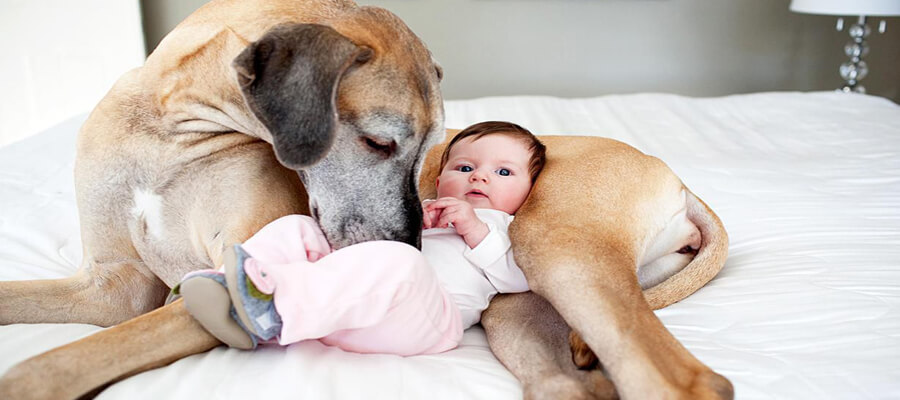
Updated on | by Critter Nets - Blogs
How to Help a Dog with Separation Anxiety
How to Help a Dog with Separation Anxiety: Effective Strategies for Owners
Introduction
Separation anxiety is a common issue faced by many dog owners. When left alone, dogs with separation anxiety may exhibit distressing behaviors such as barking, whining, chewing, and even attempting to escape. Understanding the causes and implementing effective strategies can help alleviate your dog’s anxiety and create a more peaceful environment for both of you. In this article, we’ll explore the signs of separation anxiety, its causes, and practical solutions to help your dog cope.
1. Understanding Separation Anxiety
What Is Separation Anxiety
Separation anxiety occurs when dogs experience excessive distress when separated from their owners or caregivers. It’s important to recognize that this is not simply a case of misbehavior; rather, it’s a genuine emotional response that can affect a dog’s overall well-being.
Signs of Separation Anxiety
Common signs of separation anxiety include:
Essentials for Your Newly Adopted Pet
Welcoming a shelter pet into your life is a beautiful journey. Here are some handpicked items to help your new friend feel safe, loved, and right at home:
- Excessive barking or whining
- Destructive behavior, such as chewing or digging
- House soiling
- Pacing or restlessness
- Attempting to escape
- Excessive salivation or drooling
If your dog exhibits these behaviors primarily when you leave, they may be suffering from separation anxiety.
2. Identifying Triggers
Understanding Your Dog’s Triggers
To help your dog, it’s essential to identify what triggers their anxiety. This may include the sound of keys jingling, picking up your bag, or any routine that precedes your departure. Observing your dog’s behavior can provide valuable insights into their anxiety triggers.
Environmental Factors
Consider any changes in your dog’s environment that may contribute to their anxiety. This could include moving to a new home, the arrival of a new pet or family member, or changes in your schedule. Identifying and addressing these factors can be beneficial in alleviating your dog’s anxiety.
3. Creating a Safe Space
Designate a Comfort Zone
Creating a designated safe space for your dog can help them feel more secure when you’re away. This space could be a cozy bed, crate, or a specific room where they can relax. Include familiar items such as toys, blankets, and items with your scent to make the space comforting.
Calming Aids
Consider using calming aids such as anxiety wraps, pheromone diffusers, or calming music to create a soothing environment for your dog. These tools can help reduce anxiety levels and promote a sense of safety.
4. Gradual Desensitization
Practice Departures and Arrivals
To help your dog adjust to being alone, practice short departures and arrivals. Start by leaving your dog alone for just a few minutes and gradually increasing the duration as they become more comfortable. This process, known as desensitization, helps your dog learn that you will always return and that being alone is not something to fear.
Positive Reinforcement
Use positive reinforcement to reward calm behavior when you leave and return. This could include treats, praise, or playtime when your dog remains relaxed during your departures. Reinforcing calmness helps build a positive association with being alone.
5. Training Techniques
Basic Obedience Training
Teaching your dog basic obedience commands, such as “sit,” “stay,” and “down,” can help establish structure and routine, making them feel more secure. Training sessions can also provide mental stimulation, which may alleviate anxiety.
Leave It Command
Train your dog to respond to the “leave it” command, which can be helpful in redirecting their attention away from their anxiety triggers. This command can be practiced with treats and toys, allowing your dog to focus on positive reinforcement.
6. Exercise and Mental Stimulation
Regular Physical Exercise
Ensuring your dog receives regular physical exercise is essential for reducing anxiety. A tired dog is less likely to exhibit destructive behaviors or anxiety when left alone. Aim for daily walks, play sessions, and interactive games to keep your dog engaged.
Mental Enrichment Activities
Provide mental stimulation through puzzle toys, scent games, or training exercises. Engaging your dog’s mind can help alleviate anxiety and provide an outlet for their energy.
7. When to Seek Professional Help
Consulting a Veterinarian
If your dog’s separation anxiety persists despite your efforts, it may be time to consult a veterinarian. They can assess your dog’s behavior and rule out any underlying medical conditions that may contribute to anxiety. In some cases, medication may be recommended to help manage severe anxiety.
Working with a Certified Trainer or Behaviorist
For dogs with more severe anxiety, working with a certified dog trainer or animal behaviorist can provide additional support. They can create a tailored training plan to address your dog’s specific needs and help them cope with separation anxiety.
Conclusion
Separation anxiety can be challenging for both dogs and their owners, but with patience, understanding, and the right strategies, it is possible to help your dog feel more secure when left alone. By creating a safe space, implementing gradual desensitization techniques, and providing regular exercise and mental stimulation, you can support your dog in overcoming their anxiety. If needed, don’t hesitate to seek professional help to ensure your dog receives the care and support they need.
Affiliate Products
We may earn a small commission when you shop through our links — it helps us keep sharing love and care for every dog out there, at no extra cost to you.

